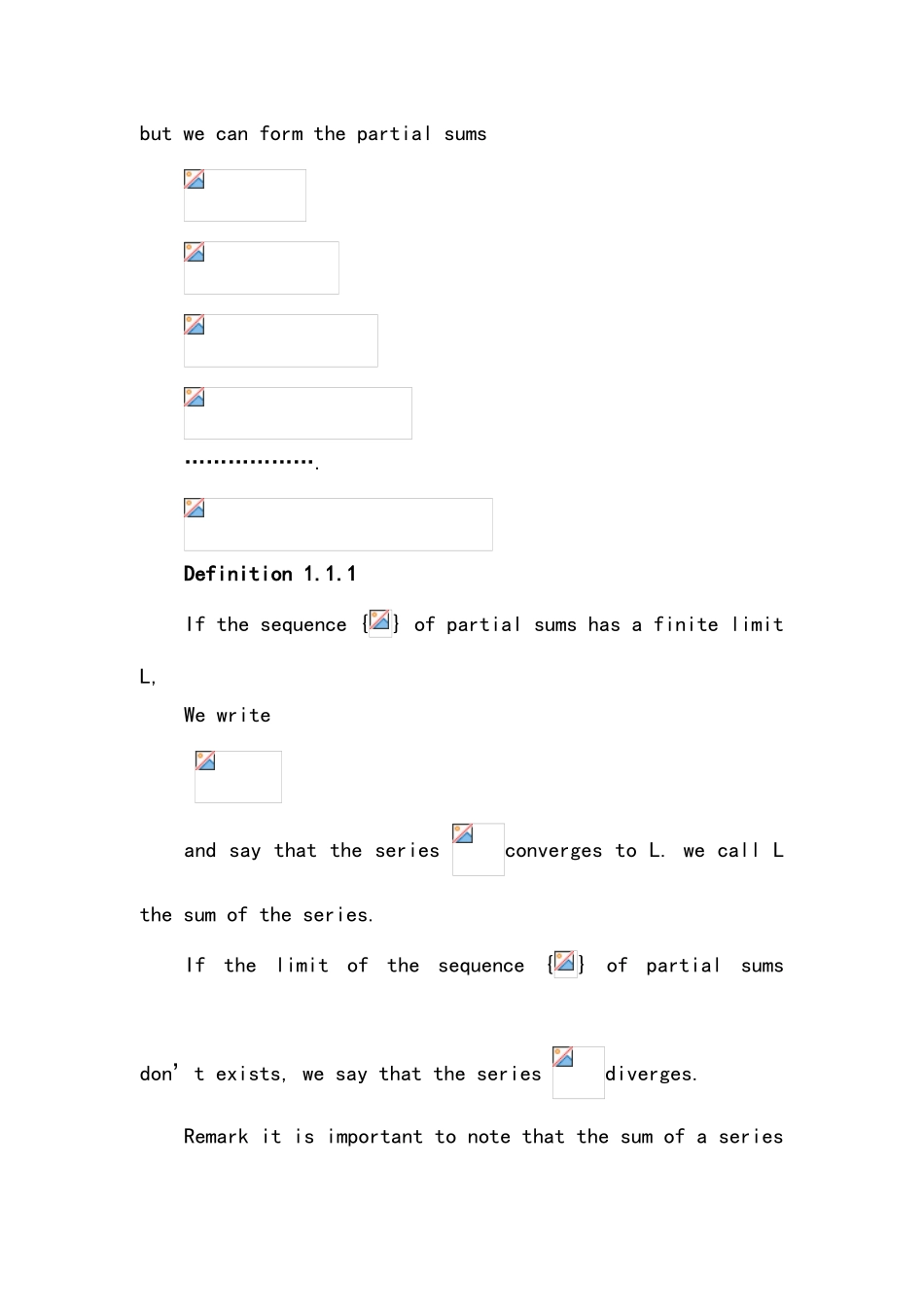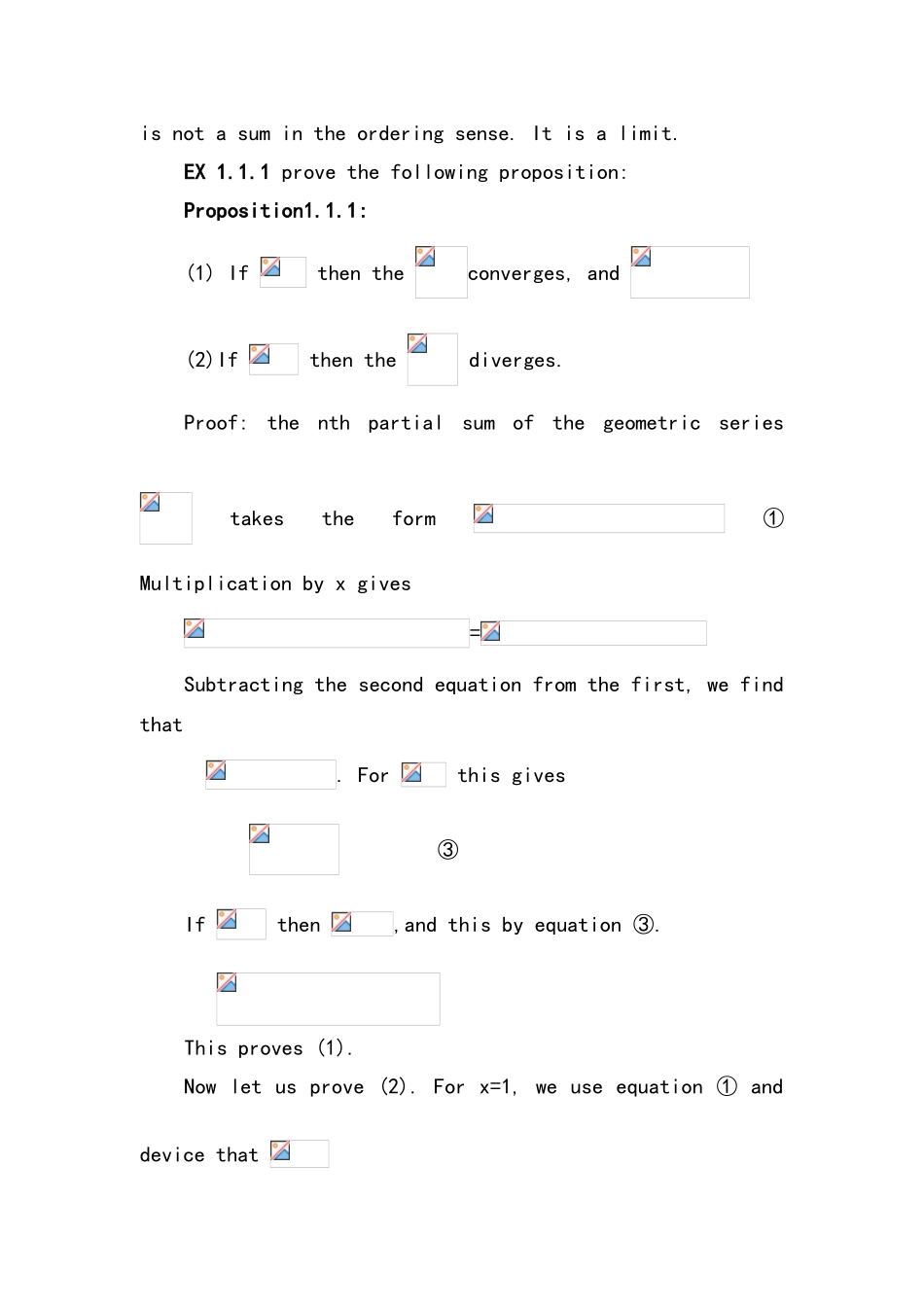Chapter 1 Infinite SeriesGenerally, for the given sequence the expression formed by the sequence is called the infinite series of the constants term, denoted by , that is =Where the nth term is said to be the general term of the series, moreover, the nth partial sum of the series is given by Determine whether the infinite series converges or diverges.While it’s possible to add two numbers, three numbers, a hundred numbers, or even a million numbers, it’s impossible to add an infinite number of numbers. To form an infinite series we begin with an infinite sequence of real numbers: , we can not form the sum of all the (there is an infinite number of the term), but we can form the partial sums……………….Definition 1.1.1If the sequence {} of partial sums has a finite limit L, We write and say that the series converges to L. we call L the sum of the series. If the limit of the sequence {} of partial sums don’t exists, we say that the series diverges.Remark it is important to note that the sum of a series is not a sum in the ordering sense. It is a limit. EX 1.1.1 prove the following proposition:Proposition1.1.1:(1) If then the converges, and (2)If then the diverges.Proof: the nth partial sum of the geometric series takes the form ① Multiplication by x gives =Subtracting the second equation from the first, we find that . For this gives ③If then ,and this by equation ③. This proves (1).Now let us prove (2). For x=1, we use equation ① and device that Obviously, , diverges.For x=-1 we use equation ① and we deduce If n is odd, then,If n is even, then The sequence of partial sum like this 0,-1,0,-1,0,-1………..Because the limit of sequence of partial sum does not exist...


